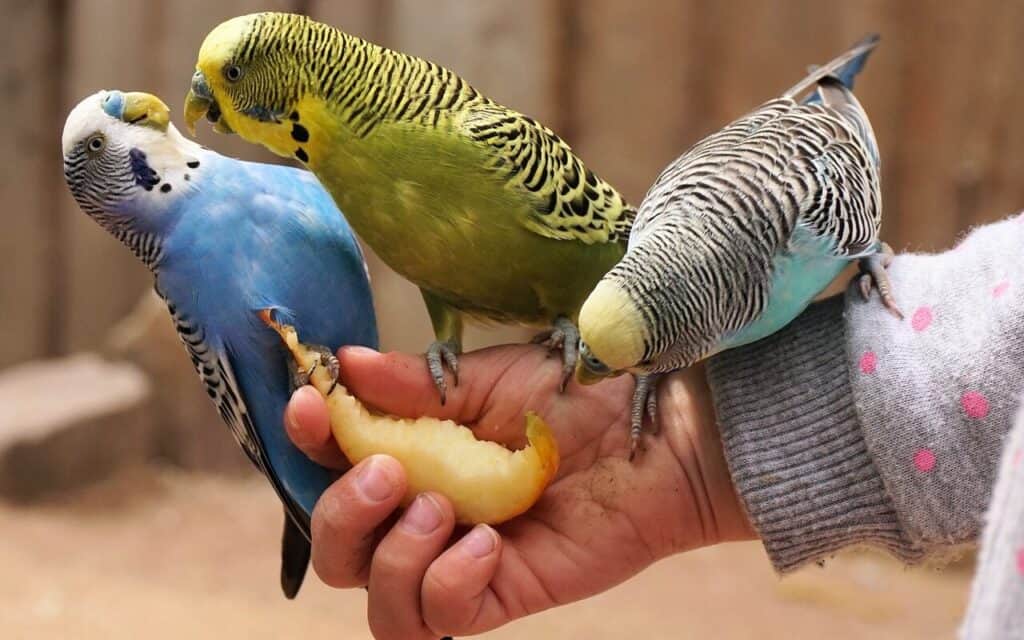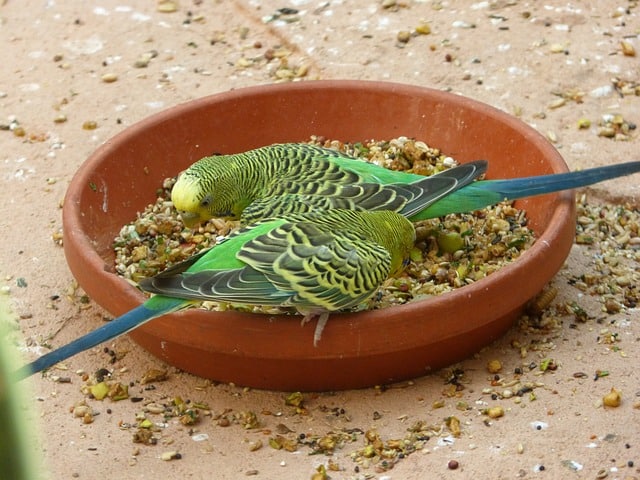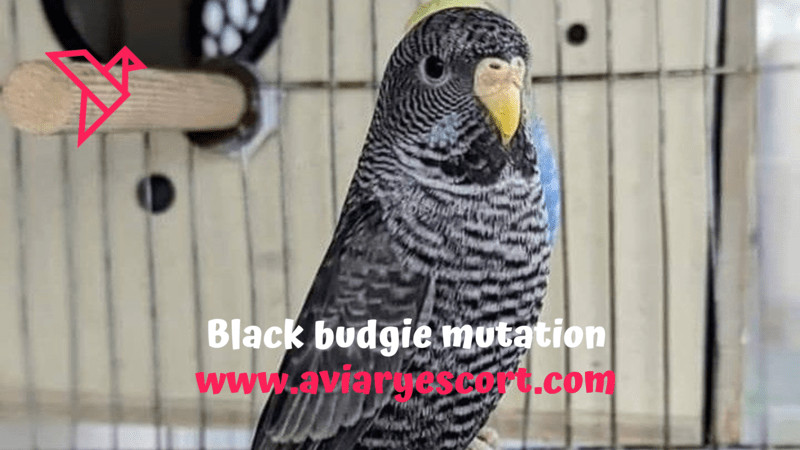When you bring home a new budgie, you may find yourself wondering, “How old is my budgie?” Knowing the age of your feathered friend can provide valuable insights into their behavior, health, and overall care. While it may not be possible to determine the exact age of a budgie with complete accuracy, there are several indicators you can look for to make an educated estimate. In this guide, we will explore various methods and signs that can help you gauge your budgie’s age.
Understanding Budgie Lifespan
Before delving into the various age indicators, it’s essential to have a basic understanding of the typical lifespan of a budgie. On average, budgerigars, commonly known as budgies or parakeets, live for about 5 to 10 years in captivity. However, with proper care, some budgies have been known to reach 15 years or more. Factors such as genetics, diet, exercise, and environmental conditions play significant roles in determining a budgie’s lifespan.
1. Physical Appearance and Feather Condition
Examining your budgie’s physical appearance and feather condition can provide valuable insights into their age. Young budgies, especially chicks, tend to have a soft, fluffy appearance, with feathers that are not fully developed. As they grow older, their feathers become more defined and vibrant in color. Adult budgies have a sleek and glossy appearance, with well-formed feathers that are usually not molted.
2. Eye Color and Cere Development
Another indicator of a budgie’s age is their eye color and cere development. Young budgies typically have dark eyes, which gradually lighten and transition to a more vibrant hue as they mature. The cere, the fleshy area above the beak, also undergoes changes. In young budgies, both males and females have pink or purplish ceres. However, as they mature, males develop a bluish cere, while females’ ceres turn brown or tan, indicating sexual maturity.

3. Veterinary Assistance and Expert Opinions
If you are uncertain about your budgie’s age, seeking veterinary assistance or consulting with avian experts can be beneficial. Veterinarians who specialize in avian care can perform thorough examinations, including assessing bone structure, plumage, and other indicators, to estimate a budgie’s age. Their expertise and experience can provide valuable insights and help you determine your budgie’s approximate age.
4. Behavioral and Vocal Cues
The behavior and vocalizations of budgies can offer valuable clues about their age. Young budgies are generally more active, playful, and prone to rapid movements. They may also produce high-pitched, repetitive chirping sounds as they explore their surroundings and communicate. Adult budgies, on the other hand, tend to be more calm, composed, and less vocal. Their chirps become more distinct and melodic.
5. Leg Band Identification
If your budgie has a leg band, it can provide valuable information about their age. Breeders often place closed leg bands on baby budgies shortly after hatching. These bands typically contain identification codes, including the year of birth. However, it’s important to note that not all budgies have leg bands, and if a band is present, it may have been removed or fallen off.
6. Feather Molt Patterns
Feather molt patterns can also give you an idea of your budgie’s age. Budgies molt their feathers periodically throughout their lives, shedding old ones and replacing them with new ones. Young budgies usually go through their first molt at around 3 to 4 months of age. This molt results in a temporary scruffy appearance. As budgies age, they experience subsequent molts, and their feathers become more defined, vibrant, and consistent.
7. Health Check and Beak Condition
Conducting a health check and examining your budgie’s beak condition can provide additional clues about their age. Young budgies typically have smoother and softer beaks. As they grow older, their beaks become more textured, defined, and robust. Additionally, older budgies may have slight wear or chipping on their beaks due to regular use and grooming.
8. Interaction and Socialization
Observing your budgie’s interaction and socialization patterns can provide additional information about their age. Young budgies tend to be more curious, inquisitive, and eager to explore their surroundings. They may be more receptive to interaction and training. Adult budgies, on the other hand, may be more reserved, establish their preferences, and display mature social behaviors.

Budgie Age Range and Estimations
Based on the various indicators mentioned above, it’s important to note that budgie age estimations can be approximate. By considering a combination of factors, such as physical appearance, eye color, behavior, molt patterns, and expert opinions, you can make an educated guess about your budgie’s age. Remember, individual budgies may vary, and age determinations are not an exact science.
Understanding the Growth Stages of Budgies
To determining your budgie’s age, it is essential to have a basic understanding of the different growth stages they go through. Let’s take a closer look at these stages:
1. Hatchling Stage
The hatchling stage refers to the period when a budgie is freshly hatched. At this stage, they are blind, featherless, and rely entirely on their parents for survival. Hatchlings are extremely delicate and require a warm and nurturing environment.
2. Nestling Stage
After a few weeks, budgies enter the nestling stage. During this stage, they begin to develop feathers, their eyes open, and they become more active. Nestlings are still dependent on their parents for food and protection.
3. Fledgling Stage
Around four to six weeks of age, budgies enter the fledgling stage. They start exploring the world outside the nest and begin to experiment with their wings, attempting short flights. During this stage, they become more independent but still rely on their parents for guidance.
4. Juvenile Stage
The juvenile stage starts at around three months of age. Budgies at this stage have most of their adult feathers and start to show distinct coloration patterns. They are more self-sufficient and can feed themselves independently.

5. Adult Stage
Finally, budgies reach adulthood at around six months to one year of age. They have fully developed plumage, and their behavior becomes more stable. At this stage, budgies are sexually mature and ready for breeding if they are of the appropriate age.
Conclusion
Determining the age of your budgie can be a fascinating and rewarding process. By examining various factors such as feather appearance, eye color, cere color, leg band identification, and beak and nail condition, you can make an educated estimation of your budgie’s age. Remember that these methods are not always foolproof, and age determination may vary depending on individual budgies. However, with careful observation and a bit of knowledge, you can get a good sense of how old your budgie might be.
Related post Budgies Breeding Season | Do Budgies Breed All Year Round?
FAQs
Q1: Can I accurately determine the exact age of my budgie?
No, determining the exact age of a budgie is challenging. However, by observing various indicators, you can estimate their age with reasonable accuracy.
Q2: Why is it important to know the age of my budgie?
Knowing your budgie’s age can help you understand their behavior, health needs, and provide appropriate care and enrichment.
Q3: Are there any specific signs that indicate a budgie is very young or old?
Yes, young budgies have fluffy feathers, dark eyes, and smooth beaks, while older budgies have sleek feathers, developed eye color, and textured beaks.
Q4: Can a veterinarian accurately determine the age of my budgie?
Veterinarians with avian expertise can perform examinations and provide educated estimations of a budgie’s age based on various factors.
Q5: How long do budgies usually live?
On average, budgies live for about 5 to 10 years in captivity, but with proper care, some can live for 15 years or more.












